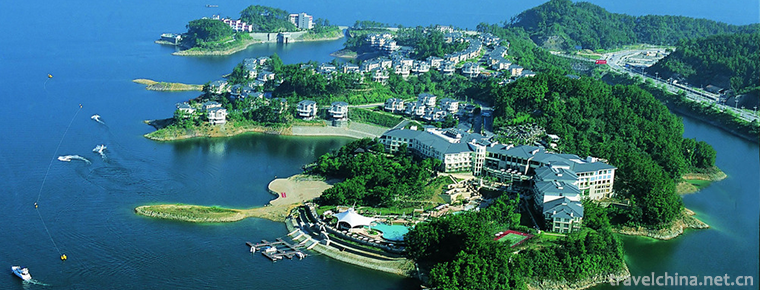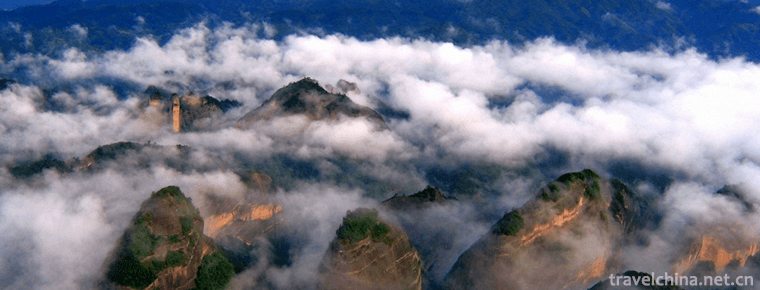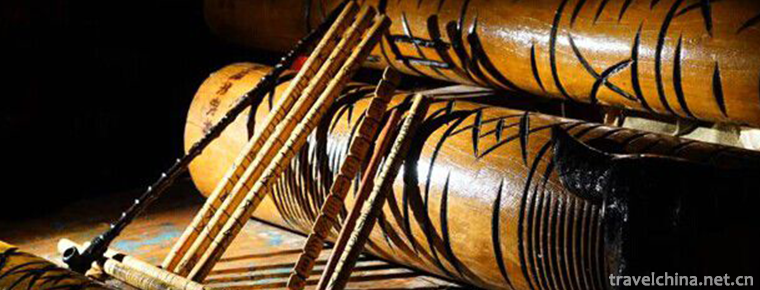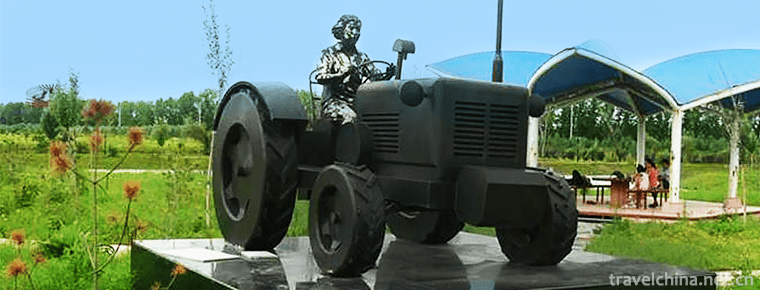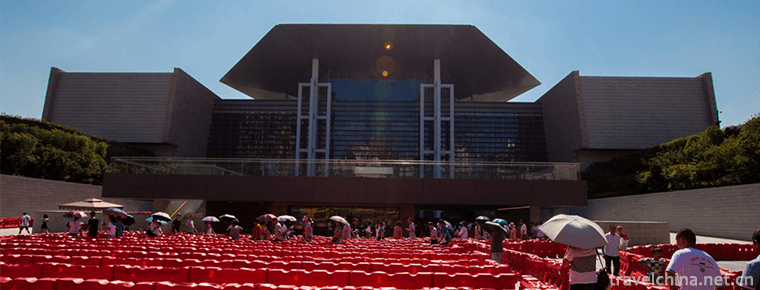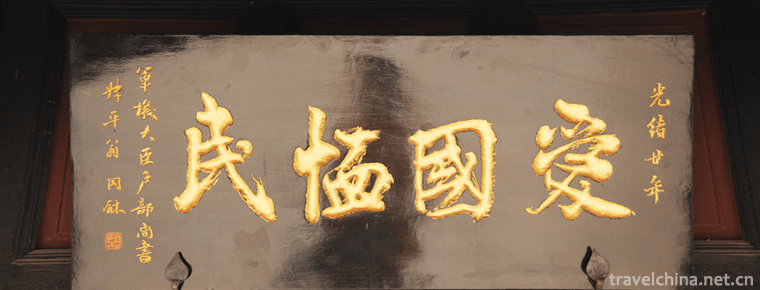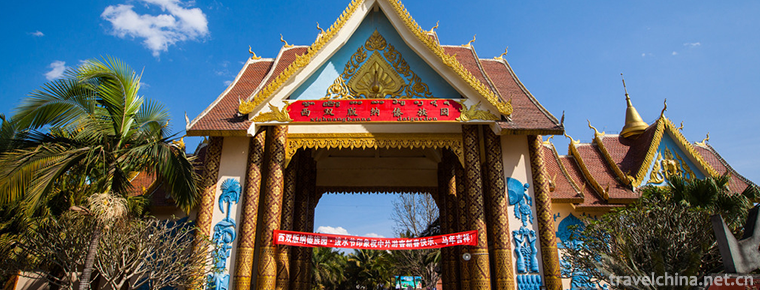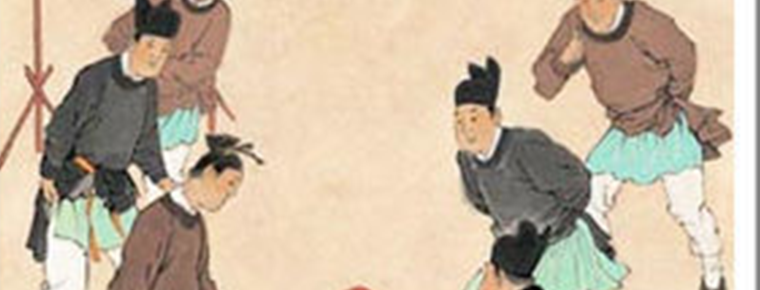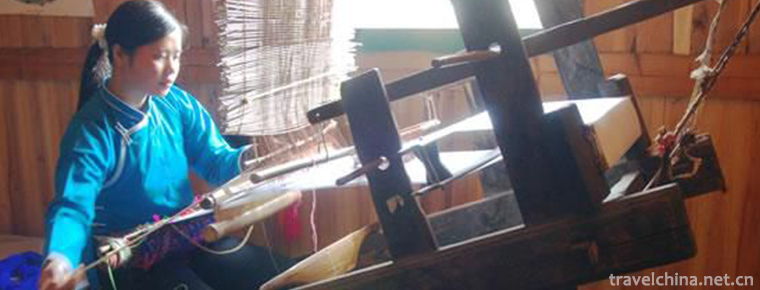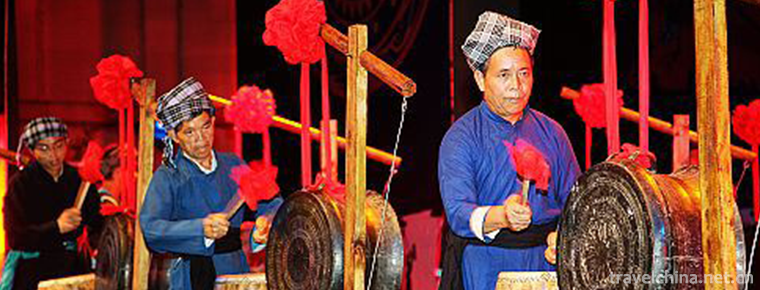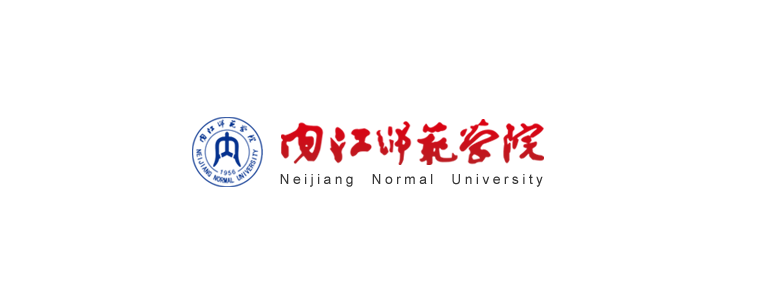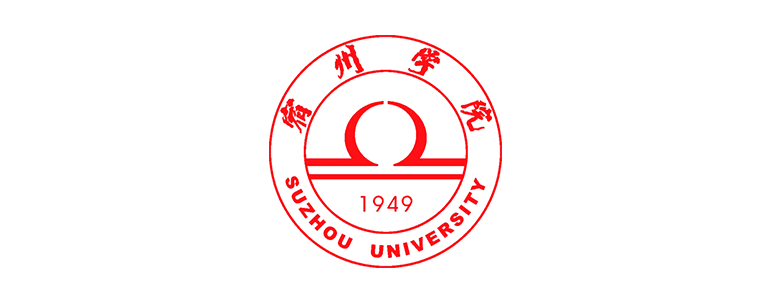Cao Xueqin
Cao Xueqin
Cao Xueqin (about May 28, 1715 - February 12, 1763) Name Stained with Word Dream Ruan No. Xue Qin No. 2, Qin Xi and celery, Chinese classic. The Dream of Red Mansion The author of the book is controversial on the ancestral home (Liaoning Liaoyang, Hebei Fengrun or Liaoning Tieling). Born in Jiangning (now Nanjing Cao Xueqin was born in Qing Dynasty. House of internal affairs Plain White Banner He is a family. Weaving in Jiangning Cao Yin Grandchildren , Cao Cao Son Cao Fu Son)
Cao Xueqin was in Nanjing in his early years. Jiangning weaving house Experience a life of Jinyi, dude, rich and romantic. Great-grandfather Cao Xi Jiangning weaving; great grandmother sun Shi's Kangxi's nanny; grandfather. Cao Yin I have been accompanied by Emperor Kangxi. Imperial Guard Later, he was weaving in Jiangning, and served as the commander of the two Huai salt inspection and supervision, which was very popular with Kangxi. Yong Zheng in six years (1728), Cao Jia was punished because of his crime, and Cao Xueqin moved back to his old home in Beijing with his family. Later he moved to the western suburbs of Beijing to earn a living by selling calligraphy and painting and friends' relief. Cao family has been losing its strength since then. After experiencing a major turning point in life, Cao Xueqin was deeply troubled by the uncertainty. feudal society We have a more sober and deeper understanding. He despises dignitaries, keeps away from officialdom, and leads a hard life like poverty. Cao Xueqin has a wide range of hobbies. Gold and stone Shi Shu, painting , Gardens Chinese medicine, darning, technology, diet and so on have all been studied. With perseverance and perseverance, he finally created great works of thought and artistry. The Dream of Red Mansion " In his later years, Cao Xueqin moved to the western suburbs of Beijing. Life is more poor, "full diameter Peng Hao", "family eating porridge wine often credit".
In the twenty-seven years of Qianlong (1762), the youngest child died, and he was overtaken by grief and grief. Qianlong twenty-eight years (1763) new year's Eve (February 12th), because of poor illness without medical treatment. About the year of Cao Xueqin's death, there was also Qianlong's twenty-nine years' New Year's Eve (February 1, 1764) and the first spring of Jiasheng (1764).
Paul Mauriat's History
Rich family
Kangxi Fifty-four years (1715) in the first month. Weaving in Jiangning Of Cao Cao stay Beijing Died during the reporting period. The purpose of Kangxi's great emperor is Cao Cao's cousin. Cao Fu Adoptive Cao Yin He took over the weaving of Jiangning. It was seven in early March of the year, Cao Cao's Memorial: "the sister-in-law Marshall of the slave, because she is pregnant now and July." This posthumous child is Cao Xueqin. In April 26th (May 28, 1715 of the Gregorian calendar) Born in Nanjing Jiangning weaving house
Cao Xueqin A few days after the full moon, three in early June, Cao's Memorial: "it rains every day, and the four fields are stained." This is the opportunity of Cao Xueqin's "dip". Take the word "Zhi" Book of Songs "Xiaoya Xin Nan Shan" is not only good, but also full of success. Two characters from "Xue Qin" Su Shi " Dongpo eight "Three:" there is a perennial root in the mud celery. When it is alone, when the snow celery moves, the spring dove can be praised.
Cao Xueqin's great grandmother sun Shi was Kangxi's babysitter, and grandfather Cao Yin was Kangxi's emperor. Accompanied reading and Imperial Guard Later, he was weaving in Jiangning, and served as the two commander in charge of salt inspection. In the two dynasties of Kangxi and Yong Zheng, Cao family, grandparents, grandchildren, three generations and four people were in charge of Jiangning weaving for fifty-eight years. Nanjing First, the world is turned into a prominent family. Kangxi six Jiangnan, Cao Yin took four times. However, Cao Xueqin had been born for several years, and I did not experience Kangxi's grand tour of South China. " The Dream of Red Mansion "Sixteenth times can be certified, the original written to the ratio. Jia Baoyu Older Miss Luo Yu Feng All have to listen. Zhao Mama Wait for the elders' dictation to understand the history.
Qinhuai dream
Cao Xueqin in the early years gave up the grace of Heaven (Kangxi's grace, Cao Xi, Cao Yinzhi). In the prosperous and prosperous state (Con Ion Shings), the flourishing flower and willow (Nanjing), the salon family (Jiang Ningzhi's building), the gentle and rich village (West Garden) enjoyed a life of a brochel dandy and rich and handsome family. The days were full of satisfaction, "only one day with the sisters, the girls, or reading, or writing, or playing the piano, playing poetry, and even describing the luanfeng, fighting grass, hairpin flowers, singing in low voice, and picking up words and Guiting". He remembered this happy life all his life, and kindly called "dream" in the first book of the dream of Red Mansions, the author from cloud.
Childhood Cao Xueqin was naughty and disgusted. Stereotyped writing No
Fond of reading Confucian classics Antipathy The imperial examination , Official economy Despite Cao's strict discipline, he hired a tutor and went to school for a few days. But because of his indulgence from Grandma Li, he often protected little Cao Xueqin. Luckily, Cao family learned a lot. Cao Yinyou, a poet of his grandfather, was engraved in Yangzhou with the complete Tang poetry and twenty hardcover books. He also took charge of Yangzhou poetry Bureau. There are 3287 books collected by Cao family. Cao Xueqin lived in such a very rich literary and artistic environment since childhood. Accept the education of father and brother, teacher and friend discipline, read extensively, especially read literature, such as poetry, prose, dramas and novels, such as opera, food, health, medicine, tea ceremony, weaving and other encyclopedia culture knowledge and skills.
Weaving in Suzhou Li Xu , Weaving in Hangzhou Sun Wencheng had a family relationship with Cao family, Li Xu and also served as the two Huai salt government (where Yangzhou was in charge, and Cao Xueqin's grandfather Cao Yin served as a part-time member). Cao Xueqin visited Suzhou, Yangzhou, Hangzhou, Changzhou and other places during her childhood visit to friends and relatives. She loved the Jiangnan landscape and friends very much. Dun Cheng , Chun min The poem is called "Qinhuai residual dream" and "Yangzhou old dream".
Home is desolate
Yong Zheng five years (1727), Cao Xueqin thirteen years old (nominal age), in December, when he was an uncle of Jiangning weaving agency Wai Lang's father (a father) Cao Tiao was sent to prison for harassing posts, weaving deficits, transferring property and so on. (family size, men and women and servants 114). Cao Xueqin moved back to Beijing with his family. Cao family has been losing its strength since then.
When I first returned to Beijing, there were seventeen old houses in Chongwen.
Half of the servants, three pairs, chatted to make ends meet. However, in order to repay the money owed by the harassment post station, and to fill the household expenses, he must have sold the acres for several thousands of gold, and the domestic slaves took advantage of this. Later, after a day's loss, it was hard to escape the sale of the "Dian Fang", and even the thieves were burglaries, so that they could not spend any money on their days. Eventually, it fell to the portal and withered away, and the population dispersed. Cao Xueqin, who was not good at home, lost all his words. "Though he dared not say that he had gone through all kinds of hardships and hardships, he felt a little better in the world."
Celebrities
At the end of Yong Zheng's life, Cao Xueqin was a year old and began to stir up family burdens and gradually helped Cao to do some housework. Due to Cao's official career at home and lazy entertainment, Cao Xueqin came out for the reception, and met some political and business celebrities and literary predecessors. Under their influence, they set up lofty aspirations of writing books and saying the right words, and gradually eliminated some of the schools of thought, and worked hard for family rejuvenation.
Humen morning
In the first year of Qianlong (1736), Cao Xueqin was twenty-two years old. Imperial edict Forgive Cao family's deficit
In the early years of Qianlong, Cao Xueqin served as a pastoral errand of the house of affairs, and later entered the right wing of the Stone Tiger Alley in Xidan. school established for members of the royal household (formerly known as "Humen") serves as a humble little post. Cao Xueqin's specific work in Zong Xue includes teaching assistants, teachers, husbands, husbands and nurses. Cao Xueqin has many friends in Beijing circle, such as Dun Cheng, dun min, Fu Peng Wait forsomeone. In their dealings, Cao Xueqin was able to appreciate the culture of Beijing's royal palace.
Qianlong nine years (1744), Cao Xueqin thirty years old. Dun Cheng (1734 - 1791) eleven years old, dun min (1729 - 1796) sixteen years old. The two brothers adore Cao Xueqin's talent and admire his uninhibited character and broad mind. On the long winter night, they sat together and listened to Cao Xueqin's witty, funny and lively "male talk", which was often attracted and impressed by Cao Xueqin's "fantastic talk" and "eloquence". Dun Cheng "cherish the memory of Cao Xueqin (DIP)" poem cloud: "at that time Humen morning morning, the west window cut candle, wind and rain." Record and memorable this memorable day.
Cao Xueqin wrote about the first draft of a dream of Red Mansions during the period.
Crazy song of Yan City
In the twelve years of Qianlong (1747), Cao Xueqin was thirty-three years old, so he moved to the western suburbs of Beijing in that year. Over the next few years, he lived in the Ministry of justice in Xidan, Beijing, the Wat Chayamangkalaram outside Chongwen, the four royal palace and the Tong Yu village in Xiangshan white flag, and the North uphill slope with yellow flag camp. Bai Jia An (about 50 Li outside Xizhimen) During this period, Cao Xueqin lived in a grass hut, enjoying wild flowers, living in a secluded life, such as poetry, wielding, singing and selling, painting, drinking, singing, reminiscence, and writing books. He appreciated the culture of Beijing's marketplace, while selling calligraphy and painting and Fu Peng, dun Cheng, Dun Min. Zhang Yi Quan As for the relief of relatives and friends, dun Cheng "to give Cao Cao garden" poem cloud: "full diameter Peng Hao is not old, family eating porridge wine often credit." Cao Xueqin's lifelong regret was nothing short of success. "In the poor and poor situation, he felt very sad and depressed, so he could not help but indulge himself in a song of wine, and find himself dispatched". Two kinds of Fu The true sex is more vivid.
Write yellow leaves
Cao Xueqin's ambition to "fill the sky" has never been sluggish. Until later years, Cao Xueqin, a friend of mine, is still comforting him: "to persuade a gentleman to play a guest, to persuade a gentleman to kowtow to Fu's door." It's better to write a book than to have a cold meal. Huang Ye Cun " It means that because of the identity and other reasons after the sin minister, Cao Xueqin's personal struggle encountered difficulties and obstacles. Cao Xueqin also had no expectations. In his more than 10 years of seclusion in the Western Hills, he wrote the masterpiece "a dream of Red Mansions" with the perseverance and perseverance of "the ten treasures, five times".
revisit
Qianlong twenty-four years (1759), Cao Xueqin forty-five years old, about the South tour. Jiangning The reason for the southern tour is unknown. It may be to visit the dispersed people or to do other household chores. (Cao Xueqin was appointed before and after this time. Viceroy of Liangjiang Yin Ji Shan Of Aides and staff ) During the southern tour, I experienced the mountains and rivers. Zhang Yiquan's poem "Huai Cao Qin Xi" was used in this period.
Qianlong twenty-five years (1760), Cao Xueqin forty-six years old, early autumn, Deng min poetry, "closed door stuffy sitting feeling" cloud: "the old friendship is not the same, but the past is revive like a dream." It may be that Cao Xueqin traveled south and never returned. The South tour lasted more than a year and returned to Beijing before and after the Double Ninth Festival. Shortly after the festival, Ming Lin met Cao Xueqin in his hometown stone hsuen, and wrote it in "feeling growing sentence".
Poverty and death
After Cao Xueqin traveled south to Beijing, he continued to write a dream of Red Mansions. In the twenty-seven years of Qianlong (1762 noon), Cao Xueqin was forty-eight years old. He was in bed with grief and grief because of his early death. New year's Eve Died in Beijing Dun Cheng as "Cao Xueqin", "Dun Min" as "river dry collection drink" and "hanging snow celery", Zhang Yiquan as "injured Qin Creek".
In the forty-four years of Qianlong (1779), Cao Xueqin died for seventeen years, and dun Cheng wrote Cao Xueqin's letter to send his elder brother (Dun Min).
Main achievements
Cao Xueqin's greatest contribution lies in literary creation. His dream of Red Mansions, with its large scale, rigorous structure, complex plot and vivid description, has shaped many typical artistic images. It is the peak of ancient Chinese novels and occupies an important position in the history of world literature. Cao Xueqin has left valuable cultural heritage and spiritual wealth for the Chinese nation and the people of the world. It not only has a profound influence on the creation of later generations, but also produces a lot of excellent derivative works in the fields of painting, film and television, animation, online games and so on. In academic circles and society, the research and Discussion on the author, version, text and ability of the dream of Red Mansion has even formed a special knowledge. Red studies
Literary characteristics
"Born in prosperity, finally reduced." Cao Xueqin's family, from the flourishing of flowers and brocade, fell into the rustling and declining state, which made him deeply feel the sadness of life and the ruthlessness of the world. He also got rid of the vulgar and narrow class of the original class, saw the irretrievable decadence of the feudal aristocratic family, and also brought disillusioned sentiments. His tragic experience, his poetic emotion, his exploring spirit and his innovative consciousness were all cast into a dream of Red Mansions.
Love life and have a sense of dream, accession to the WTO and this is Cao Xueqin's contradiction in exploring life. Cao Xueqin is not. Pessimism He does not really think that everything is empty in the world, nor does he really break through the red dust. He really wants to wake people up from the so-called dust dreams. Otherwise, he will not be so miserable to shed bitter tears for the sadness of the world, and he will not be so rigid in the real life in his feelings. He wrote the yearning for indulgence and birth after his accession to the world with a deep feeling and with his own experience. He wrote the yearning for the pain of life and the desire to extricate himself, and wrote contradictory emotional world and real life experience.
There are two authors in the first book of a dream of Red Mansions. In these two prefaces, Cao Xueqin wrote about himself.
The origin, the writing experience and the experience, vividly expressed own literary thought and the creation principle. He criticized the creative tendency of formulating, conceptualizing and breaking the reality first, and thought that this creation was far less "fresh and chic" than the works created by his own sense of reason. Those "big and indifferent and conflicting" works were "not as good as my half life to see these women whom I heard". He does not rely on any historical story, nor is it based on any folk creation. Instead, he draws directly from the real social life. It is "the words appear to be blood" and permeates the author's personal feelings of blood and tears. The works "truthfully describe, do not hide", and maintain the diversity of real life and the richness of phenomena. From all kinds of characters, it shows the absurdity, weakness and the trend of segregation and ruin of the rich family. The characters he wrote broke the way that "good people are good and bad people are totally bad". "The characters are real characters", making the characterization of ancient novels transform from typicalization to individuation, and create typical characters. Cao Xueqin used his poets' sensitivities to perceive life, emphasized his own life experience, consciously created a poetic artistic conception, and made his works tactful and implicit. He did not like the past novels to judge the life, set up a moral court, make a righteous sentence for the personnel, but write the tremor of the character's heart, the incondescending psychology, the bitter taste of life and the cool and warm atmosphere, so that readers can savor the taste of life.
Character evaluation
Zhou Ru Chang Cao Xueqin's life, It is unusual, frustrate and brilliant. He is a pleasant, beloved and respectful person. He also suffers from worldly misunderstanding, slander and exclusion. He has old and Zhuang philosophic thinking. Qu Yuan The "Sao" is indignant. Sima Qian Shi Cai Cai Gu Kai Zhi Painting skills and "obsession" Li Yi-chan , Du Mu The wind is flowing. Li Gui Yan , Huang Fan Chu The genius of music and drama... He has a life experience of high and low, honor and disgrace, prosperity and decline, separation, sadness and joy. He also has the wonderful combination of Manchu and Han, Jiangnan and Jiangbei's cultural characteristics. So I say he is a representative figure of Chinese culture.
Hu De Ping The British say they would rather lose the British Isles than lose Shakespeare. Cao Xueqin and Shakespeare , Cervantes In the same way, the torch of literature gives people true feelings, gives people warmth, and gives people courage to bid farewell to the old system.
Cai Yi Jiang Cao Xueqin is one of the greatest litterateur in China. His status and achievements in the history of world literature compare with that of Shakespeare. Goethe , Balzac , Pu Jin Jin , Tolstoy None of them are inferior.
Zhang Qing Shan Cao Xueqin is the greatest writer in China. He deserves the remembrance and remembrance of the Chinese people. Because he is. The Dream of Red Mansion The author of the book is a symbol of Chinese culture. Because of Cao Xueqin and the dream of Red Mansions, Chinese people are faced with the great masters of world literature such as Shakespeare, Balzac, Pushkin, Tolstoy, and so on. Because Cao Xueqin's dream of Red Mansions, with its profound thoughts, exquisite art and eternal charm, is comparable to any other literary classics in the world. It always stands in the world literature. Mount Qomolangma It is the pride of the Chinese nation.
Anecdotes
Legend of Xishan
In June 2011, " Cao Xueqin's legend of Xishan "The third batch of national intangible cultural heritage list was selected. These word-of-mouth materials are numerous, and stories and legends cover a wide range, including Cao Xueqin's personality, life experience, experiences, relatives, friends, Cao Xueqin's writing of a dream of Red Mansions, the residence of Cao Xueqin, and how Cao Xueqin can help the poor. This confirms that under the eaves of the four royal palace near the white flag village, there are still traces of the story of a dream of Red Mansions.
"In front of the door, old Sophora tree is crooked, Ohashi Keimizunoserima." The long-standing tradition of Cao Xueqin's former residence in the Xishan region is exactly what the author of the dream of Red Mansions said was that he lived in the "rank willow court flower" and where Zhang Yiquan wrote Cao Xueqin's residence. It was verified and coincided with "the front mountains and rivers for painting, the flowers and birds in front of the hall", and many scholars have deduced Beijing. Cao Xueqin Memorial Hall The site of the Qing Dynasty is the flag of the white flag, which is the place where Cao Xueqin lived and wrote a dream of Red Mansions. In the past, the white flag flag camp was fully regulated, the buildings were arranged in rows, and different buildings had different functions. For example, the stalls not only store household registration files, but also distribute the rates.
Poetic wine
Dun Min and dun Cheng's poems recorded the deeds of Cao Xueqin's indulgence in poetry and wine. In the morning of a rainy morning, dun Cheng visited the Huai garden in Dun min house (located on the Taiping Lake side of the southwest corner of inner city), and met Cao Xueqin by chance. Because the time was early and the master did not wake up, the two men went to the restaurant to drink. Dun Cheng was able to help him with his knife and wine, and Cao Xueqin was grateful for his songs. On the other hand, Dun Min and dun Cheng took a few cans of good wine to the Western Hills to pay a visit to Cao Xueqin, picking melon flowers to cook. Melon flower drinking Heart Music Sentence.
Hu Si Lai
In the dream of Red Mansions, several Qing guests came to Jia's house. When Cao Xueqin wrote here, he wanted to satirize them on their names, so he named one of them "Hu Si Lai". But what is "Hu Si Lai" is not known to many people. Actually, this is a kind of fruit in Xiangshan area. This kind of fruit is made by grafting the apples and the nuts into the locals. The appearance is very beautiful, but the taste is very dry. It is only suitable for dressing in the fruit tray. Fan Zhibin said, "in the legend, Cao Xueqin also knows this fruit in Xiangshan, and the name for the Qing guest implies that they are bright looking but without any inner human beings."
Fair old child
Fan Zhibin recalled that there was a more than 90 year old man at the top of Xiangshan mountain. Jia Baoyu Exaggerate Assail others It is the origin of "fair old children". "Fair old child" is actually a plant. People in Xiangshan area like to plant it. But it is not for harvest, but for drawing boundaries. Some people like to be cheap. When they plough their fields every year, they try to dig a little bit away from other people's homes, and do not recognize them when they are discovered. With the "fair old child", we can see where the boundary is and where the land should be. Because its roots are very deep, it is not easy for those who love small and cheap people to dig. So the local people called this plant the most "fair". "Cao Xueqin lived there at the top of the mountain, so he was probably the" fair old man "who knew at that time. It's a pity that we wanted to go to the old man again in second years, but we learned that he had passed away. "
Noble medical ethics
according to Kong Xiang se The old man said that at the beginning of 1970s and Wu en Yu Go, sir. Bai Jia An A visitor once heard a villager say, "in the past, a doctor in the banner of Xiangshan often saw the sick and did not pay money to the poor. At first, he borrowed tables and chairs from an empty temple on the south side of the mountain to see a doctor. Later he moved to Qiaoxi. Mr. Shu Chengxun once told Confucius that there were many herbal shops in the indigo plant, and Cao Xueqin often went to these shops to prescribe drugs or medicine for patients. Kong also said that Xue Qin had cured many stubborn diseases for many poor people. People praised him for his excellent medical skills and noble medical ethics.
Empty Temple
Yang Yi Mr. Chang has lived in Tai Zhou Wu near Bai Jia Tuan for a long time. He once wrote the famous poets in Qing Dynasty. Na LAN Xing De "There is a small temple on the southern side of Cao Xueqin's residence," he said. Temple, an area of about ten square meters. Because there are no idols and tablets in the temple, empty, and the locals call it the empty temple. The temple was demolished in the late 1970s and early 80s when the land was leveled. Although there is no written record, but judging from the shape and location, it is a kind of mountain temple. There is no textual research on the age of architecture. Some people think that this "empty Temple" may be related to Cao Xueqin's "empty Taoist" written at the beginning of a dream of Red Mansions.
Red school contention
Who is the son of celery?
Talk about Cao's posthumous son
Cao Xueqin was first proposed. Cao Cao The posthumous child is Li Yuan Bo He said: "(Cao Yong) wife Marx, pregnant in July, its abdomen was born in May and June. Kangxi went down to Qianlong for twenty-seven years in fifty-four years. In every forty-seven years, if he left his belly in a man, he would be in the name of "Dun Fu Yin" in the forty year, or Xue Xue Ye. Yan Wei Qing Wang Liqi Wang Qixi supported the "posthumous child" theory.
Other basis for "the theory of leaving a child":
(1) family background. Baoyu by Jia Mu Cao Xueqin is also Cao Yinzhi's grandson.
(2) birthday, Baoyu birthday April 26th, coincides with the fact that Marx has been pregnant for nearly nine months. "October conceive" means nine months, 10 days, 40 weeks, usually 37 weeks. Term 28 weeks to less than 37 weeks. premature delivery );
(3) age, when Zhen family had an accident Zhen Baoyu Fourteen years old, Yong Zheng five years (1727) when Cao family had an accident, Cao Xueqin was twelve years old, and Cao Xueqin was thirteen years old when he was being picked up the following year. ;
(4) experience, Cao Xueqin experienced the family's bustling old dream before he was thirteen years old, which coincided with the author's "dream".
(5) background, the end of Jia's family coincides with the end of Cao's family at the end of Kang and Yong, Bao Yuhe. Miss Luo Yu Feng Kangxi did not catch up with the grand tour of South China. He could only listen to Zhao Momo and his elders.
Talk about the son of Cao
The father of Cao Xueqin is Cao Cao. Hu Shi He said, "after Cao Yin's death, Cao took the role of weaving. In the fifty-four year of Kangxi, Cao was either dead or replaced by something. Weaving is House of internal affairs As a result of the difference, "Cao Tong Tong" is called Cao Yin as a political governor. Wai Wai Lang But in a dream of Red Mansions, Jia Zheng It is also the second son, who will not attack the throne, but also the staff. The three layers coincide with Cao. Therefore, we can think that Jia Zheng is Cao. Therefore, Jia Baoyu is Cao Xueqin, the son of Cao, and this layer is easier to understand. Later, according to a poem written by Cao Xueqin in "forty years of Hua Fu Yin", Zhou Ruchang found that Cao Xueqin lived only 40 years old, and he was born in Yong Zheng two years (1724).
Battle of death
Ren Wu theory
That is to say, Cao Xueqin died in the twenty-seven noon of the Qianlong (New Year's Eve February 12, 1763). according to Yan Yan Zhai " Zhi Yanzhai "( Jiaxu Version In the middle of the Lunar New Year's Eve, the book was not completed, and the tears were exhausted. Hu Shi put forward the statement that Cao Xueqin died on New Year's Eve. critic , Pei Zhang Wang Others agree with this view.
GUI Wei said
That is to say Cao Xueqin died on the eve of Qianlong twenty-eight years on the eve of the new year (February 1, 1764 Gregorian calendar). According to tun min's "Mazhai Zhai poetry", it is written in the poem of the second year of the year, "sending Cao Xueqin by the little poem to the Cambodian". Since Dun min invited Cao Xueqin to his family to enjoy drinking and enjoying spring, Cao Xueqin could not die in the year of noon. Dun Cheng has a poem called "Cao Xueqin", which was written at the beginning of the first year of the Jiasheng poem. Zhou Ruchang textual research shows that in the twenty-eight years of Qianlong (1763), smallpox broke out in the capital. Cao Xueqin's youngest son was infected with smallpox, unable to seek medical treatment and died. This year, when the Beijing smallpox incident was founded on history, dun Cheng and dun min were killed by smallpox for five lives. Dun Cheng once said, "the measles in the swallow is epidemic, and the children are half of the city." Contemporaneous Jiang Shi Quan Writing poetry also notes: "in March and April, in October, nine doors came out seven thousand. Outskirts of pox pox Mo count, ten all one or two! " This is a serious disease. In the second poems of Cao Xueqin, he once said, "in the three years, I had pity on me. Cao Xueqin lost his beloved son, mourned for illness, and finally died. Wu en Yu , Wu Shichang Support for "Gui Wei"
Discrimination of ethnic groups
Manchu theory
Cao Xueqin's ancestors Cao Xi Yuan As early as Later Jin In the period, he joined the Manchuria nationality and was in Manchuria. Plain White Banner In the generation of Cao Xueqin, Cao family has lived in Manchu for more than 100 years. No matter from Cao Xueqin himself or from his book a dream of Red Mansions, he can find countless ties with Manchu culture. Cao Xueqin should be Manchu Han, or Manchu.
After the capture of Cao Jia Zu, there was a marriage between Manchu and nature. Cao Yin's two daughters, Cao Xueqin's two aunt, were married to the king of Manchuria. Nerso "Another" Prince of comfort ". From the beginning of the Qing Dynasty to the Kangxi Dynasty, the intermarriage between the Manchu and Han nationalities was strictly forbidden. Therefore, this marriage undoubtedly indicates that Cao's manhood has been recognized by the Qing Dynasty. Cao Jia joined the Manchuria nationality and got it. qianlong emperor In recognition of the approval, Cao family was included in the Qianlong years. Eight banners Manchuria clan genealogy Among them. In addition, Jiangnan Tongzhi "Clearly recorded Cao family for Manchuria people.
Han Nationality Theory
Emperor Kangxi in Cao Yinhe Li Xu Please let the Manchu man fill the salt transport order in the memo: two the Huai River transport has a lot to do with it. Therefore, Jiu Qing will choose and have a purpose; Kuang Manchuria has never worked as an example. In the seven years of Yong Zheng, the government of the interior of the house used to supplement the three banners of the inner government. The list of emperors in the imperial court was: Shangzhi Shun zuozhi, Cao Yi, a military school, and served for thirty-three years.
Ancestral dispute
Shenyang says
In May 2012, Cao Fu epitaphs unearthed in Shenyang. Cao Fuyuan died in the twenty-one year (1485) of Yu Chenghua, a general of Huaiyuan in Shenyang in the Ming Dynasty. Cao Fu and his son Cao Mingjun are Cao Xueqin's descendants of Cao Jun. The names of the two people also appeared on the donation list of Chenghua twenty-three years (1487) "monument to the monastery of Changan in Shenyang". The two posts in the inscription were marked as "the commander of the Shenyang center".
The Cao clan genealogy of Liaodong contains: (CAO) Jun, commanding by Gong Gong, sealing the general of Huaiyuan, restoring Liaodong, regulating Jinzhou and following the Shenyang central defender. Cao Jun transferred to Shenyang in the period of Ming Hongwu (1368 - 1398), and his descendants, from Cao Fu and Cao Ming, to Cao Xueqin's five ancestor. Cao Xi Yuan He lived in Shenyang for more than 200 years. Therefore, from the narrow definition of ancestral home, Cao Xueqin's ancestral home is in Shenyang.
" Eight banners Manchuria clan genealogy Volume seventy-four: "(Cao Xiyuan) lived in Shenyang." This is the royal archives of the Qian Long era, with absolute authority and no error. It is more effective than any other evidence.
Cao Xiyuan was a junior officer stationed in Liaodong and Shenyang in the Ming Dynasty. Later Jin Destiny six years (1621) return to Manchuria Plain White Banner For clothing. About five years in Qing Dynasty (1648), the son of Cao Xiyuan. Cao Zhen Yan along with Dorgon Customs clearance.
The reason why scholars mistake Shenyang for Liaoyang is that they know too little about Liaodong's geographical knowledge. In fact, Liaoyang not only refers to Liaoyang county (prefecture, prefecture, city), but also the whole Liaodong area, including Shenyang, also known as Liaoyang. There is a book about "Book of Songs" in the Qing Dynasty. There is a wood engraving map, which is called "Liaoning province" as "Liaoyang province". It can be seen that Liaoyang was a great place name in the Qing Dynasty. Therefore, in his later years, Zhou Ruchang gave up the theory of "Fengrun", "Liaoyang said" and changed to Shenyang.
Liaoyang says
Feng Qi Yong He said: "Xue Qin's ancestral home in Liaoyang, which is documented in family history, genealogy, documents, and stone tablets, is not a permanent one." Liu Shi De 17 pieces of information about "Liaoyang theory" are carding out. Qianlong "Zhejiang Tongzhi" Volume 122: Cao Zhenyan, Fengtian Liaoyang people. Qianlong "Datong Fu Zhi" Volume 21: Cao Zhenyan, Liaodong people. Jiaqing "Shanxi Tongzhi" Volume 82: Cao Zhenyan, Fengtian Liaoyang people. Kangxi's "Shang Yuan county Chronicles" Volume 16 Cao Xi Chuan: Ji Xiang Ping (that is, Liaoyang). The title of each volume of Cao Yin's "Nei Ting Ting poetry bank" is written by Qianshan Cao Yin Zi Qing, and Qianshan is another nickname of Liaoyang.
Tieling says
Li Fengzuo, a Tieling scholar, believed that Cao's remote ancestor Cao Duanguang was born in Liaodong in the early Ming Dynasty by Feng Yun run in Tieling and Cao Jun in the late Ming Dynasty. He was awarded the military duty by the army in the army. In Liaodong, he had been elected by Guang Guang, Jun, Sheng, Zhi, Kou, Zuo, Kou, Wei and Shi in Liaodong. He was nine years old, and three years later, and Nur Ha Che captured the eleven fort of Tieling's San Cha Er Bao. Cao Shixuan was captured and became a "white coat" slave.
Fengrun theory
In May 1931, Li Yuan Bo Based on the publication of the "the Imperial Palace family weekly" published in the "the Imperial Palace family weekly", this paper is based on the "Song poetry preface" by Yu Dong and Qian Long's "Fengrun county annals". It is proposed that Cao Xueqin's grandfather Cao Yin and "Hebei's Fengrun Cao Chonggu are brothers of the same clan". In September 1953, Zhou Ruchang was in the " New evidence of a dream of Red Mansions In the third chapter "origin of origin", the first chapter "Fengrun Ren" and the second section of the "Liaodong captives", it is a comprehensive demonstration of Cao Xueqin's ancestral home in Tangshan City Fengrun District, Hebei province.
Jinxian, Wuyang
In April 2010, Zhejiang Library Find Kangxi's genealogy of Cao family in Nanchang. The book records: from the two years of Yongle, the first ancestor, Liang Liang, from Yu Zhang and Wu Yang crossed the river to the north of the Yangtze River. He lived in Fengrun Xianning and lived in Liaodong Tieling Wei. That is to say, Wuyang is the source of Fengrun and Liaodong's Cao family. Zhou Ruchang also said: the real and exact old root of Cao Xueqin is Nanchang Wuyang ferry.
In Jiangxi, there is a coexistence of "Jinxian theory". Hu De Ping Cao clan genealogy of Yu Zhang has been discovered, which is the genealogy of Cao family in Jinxian. The name of Cao Xiaoqing is a member of the Cao clan, and Cao Xiaoqing is Cao Xueqin's Jiangxi ancestor.
Commemoration of future generations
Memorial Hall
Beijing Xishan Scenic Area
Cao Xueqin Memorial Hall ( Huang Ye Cun ): No. 39, Zheng Bai Qi Village, Xiangshan Wat Chayamangkalaram Road, Haidian District. Beijing Botanical Garden It was built and opened in April 1984. Fu Jie inscribed the plaque. The buildings in the museum are centered on 12 Qing barracks in Cao Xueqin's residence. They are divided into 5 rooms: two rooms in the East and the West. They are living rooms, study rooms, stereoscopic models, wall inscriptions, fragments and bookcases, reflecting objects of customs.
Cao Xueqin's hometown of Xishan Located in the eastern part of Beijing botanical garden, Xiangshan Wat Chayamangkalaram Road, Haidian District. At the core of the Cao Xueqin Memorial, there are six functional areas: the botanical garden, the Cao Xueqin Museum, the Cao Xueqin memorial hall, the Cao Xueqin memorial garden, and the Hong Lou Culture Expo area. Based on historical materials and field visits, we excavated and searched for the historical sites in the vicinity of the former residence of Huang Ye Village, and gradually restored the original appearance on the basis of respecting history, so as to recreate the life scenes and cultural characteristics of the white flag banner camp.
Cao Xueqin Trail: located on the east side of Hongfeng forest village in Bai Jia Tuan Village, Wenquan Town, Haidian District, in 2008, "eleven" was built and opened. Starting from the memorial hall of Cao Xueqin, we arrived at the East ditch village, Wat Chayamangkalaram, Cherry Valley and three incense sticks. Bai Jia An The village is 6.6 kilometers long. Along the way, there are more than 20 historical and cultural relics of the Qing Dynasty, such as the water diversion from Shiqu, the precious stones of Cherry Valley, the small stone bridges of Bai Jia Tuan, the prince of Yi Xian and the Wuhua temple.
Nanjing Cao Xueqin Memorial Hall
No. 217 Guangzhou Road, Nanjing Wulong Tan Park It was built and opened in September 1997.
Nanjing Jiangning weaving Museum
Jiangning weaving Museum Located at No. 123 Changjiang Road, Xuanwu District, Nanjing, the May Day was officially opened to the public in 2013.
Liaoyang Cao Xueqin Memorial Hall
Located in the east of the old town west of Liaoyang City, the east of the small road, Wu Gong hall hospital. Wu en Pei House, built in August 1997, from Feng Qi Yong Inscribe the name of the museum. The memorial hall has a statue of Cao Xueqin.
Commemorative unit
National Cao Xueqin's dream of Red Mansion Cultural Development Alliance
Date of establishment: November 4, 2012
Sponsors: Cao Xueqin Institute of Beijing
Alliance unit: Beijing botanical garden, Cao Xueqin's hometown of Xishan. Beijing Cao Xueqin Cultural Development Foundation Beijing Haidian District cultural promotion center, Beijing Haidian District Bai Jia Tuan waste culture Zhai Industrial Park, Beijing Grand View Garden , Grand View Garden Shanghai Jiangning weaving Museum, Jiangsu Dream of Red Mansions Zhenjiang, Jiangsu Jingkou District Yangzhou, Jiangsu Guangling District Jiangsu Suzhou weaving house (Tenth middle school), Hebei Langfang Red Mansion Dream circle theme park, Hebei Tangshan Cao Xueqin culture theme park, Liaoning Tieling City Culture Promotion Association, Jiangxi Wuyang Cao Xueqin memorial hall, Jiangxi Jiangxi County Chinese Culture Promotion Association, Red Chamber Dream research society, radio and television newspaper, Suzhou Evening News Department of sports and community Xiangshan Street The Ministry of culture Prince Gong House , Soochow University Zhengding County Rong Guo Fu Shu Gang, Yangzhou Slender West Lake Tourism development group, Northern Kunqu Opera Theatre
Commemorative activities
200th anniversary exhibition to commemorate the death of Cao Xueqin
August 17, 1963 -11 17, in Zhou Enlai Premier Chen Yi Under the care of deputy prime minister, at the Imperial Palace Wen Huadian By the Ministry of culture, the National Federation of literary and art circles, the Chinese Writers Association and The Palace Museum A series of large-scale events such as the 200th anniversary exhibition to commemorate the death of Cao Xueqin were co sponsored.
The 250th anniversary congress to commemorate the death of Cao Xueqin
In November 24, 2013, the 250th Anniversary Conference and academic conference to commemorate the death of great writer Cao Xueqin ended in Langfang, Hebei. Chinese dream of Red Mansions Society The Ministry of culture Prince Gong House The management center and Xin Yi Group Co sponsored the event. Activities include academic seminars, a dream of Red Mansions, theme paintings, and Cao Xueqin's unveiling. Feng Qiyong, Li Xi fan , Hu De Ping , Er Yue He And more than 120 red scholars and scholars from around the country have carried out a 2 day academic discussion on the themes of "review, recall, look forward to the great writer Cao Xueqin", "the new horizon of red studies" and "the spread of the dream of Red Mansions".
In memory of Cao Xueqin's birthday 300th anniversary
In April 2015 -12, a series of commemorative activities including cultural performances, Cao Hong cultural exhibitions and academic forums were held to form a layout of "one home and two routes", namely, the home of Haidian, Beijing, the cultural tour of the country, and the overseas cultural tour.
On October 30, 2015, the 300th anniversary commemorative meeting of Cao Xueqin's birthday was held at the Beijing Xue Yuan memorial hall, Cao Xueqin Memorial Hall. The conference has launched five highlights: leaders from state ministries and commissions, Beijing and Haidian District, many "Cao Xue" and "red school" experts, and the 87 edition of a dream of Red Mansions. Fu Lin Wang , Jie Deng Jin Lili and so on gathered at the scene; Beijing, Tianjin and Hebei jointly commemorated; Sun Longchun donated the books and crafts collections to the Beijing Cao Xueqin society; Cao Xueqin unveiled the 300th anniversary commemorative exhibition; the legend of the dream of Red Mansions was staged under the ancient pagoda tree in Huang Ye Village.
In October 2015, Sun Wenhui, a dragon in the Qing Dynasty, was jointly launched by the Heritage Publishing House and the research society. Cheng Jia Ben A dream of Red Mansions published in the Tenth Edition Beijing cultural fair Beijing International Exhibition Centre The main exhibition hall also shows the calendar of "a dream of Red Mansions", "Xue Qin Nan wine", "Cao's kite notebook", "a dream of Red Mansions" album, Cao Xueqin Memorial environmental protection bag, Sun Wen's painted red dream and postcards (vale), twelve dream of the red chamber, and so on.
In October 24, 2015, the Cao Xueqin society of Beijing, Taiwan Association of dream of Red Mansions and Taiwan hard rock creative Limited by Share Ltd jointly held a series of commemorative activities in Taipei Huashan 1914 Cultural Industry Park, including the awarding ceremony of Taiwan dream of Red Mansions industry alliance and the "Bi Meng" Literary Creation Exhibition. At the same time, the dream of Red Mansion and Art Salon also made a wonderful appearance.
Cao Xueqin Cultural Festival
Cao Xueqin Cultural Festival It is a brand cultural activity jointly organized by the Cao Xueqin society of Beijing, the botanical garden of Beijing and the Beijing Memorial Hall of Beijing. It aims to promote the fine traditional culture of China with the theme of Cao Xueqin and the dream of Red Mansions. The Arts Festival was founded in 2010 and is held annually. By promoting the traditional Chinese culture represented by Cao Xueqin in a dream of Red Mansions, let more people understand Chinese traditional culture and enhance cultural self-confidence. Cao Xueqin, director of the Organizing Committee of the cultural and Arts Festival of Chen Mingjie, said: "in the context of vigorously promoting the return of traditional culture and promoting cultural prosperity, we need to join hands with the government and non-governmental forces in promoting the traditional culture and promoting our cultural values. Cao Xue These series of images of Chinese culture with important cultural values.
Artistic image
CCTV China TV drama production center 2003 TV drama "Cao Xueqin" - Chung Hua Tou Play Cao Xueqin
National musical and musical research center, Peking University, 2013, a large-scale original national musical Cao Xueqin. Tang Zi Xing Yun Fei plays Cao Xueqin.


-
Thousand Islet Lake Qiandaohu Scenic Area
Qiandaohu Scenic Area, also known as Xin'anjiang Reservoir, is located in Chun'an County, Hangzhou City, Zhejiang Province..
Views: 190 Time 2018-12-07 -
Lang Mountain Scenic Area
Langshan is located in the northwest side of the hinterland of the Yuechengling Mountains, which is the longest in Wuling Mountains. It spans Xinning County and Resource County.
Views: 210 Time 2018-12-12 -
Kedao
Kedao, the local traditional folk literature of Shibing County, Guizhou Province, is one of the national intangible cultural heritage..
Views: 266 Time 2018-12-15 -
The Great Northern Wilderness Agricultural Expo
Beidahuang Agricultural Machinery Expo Park is a national AAAA-level tourist attraction located in Youyi County, 50 kilometers away from the city center, covering an area of 350,000 square meters..
Views: 174 Time 2018-12-26 -
Hunan Provincial Museum
Hunan Museum is the largest museum of history and art in Hunan Province. It covers an area of 49,000 square meters and has a total floor area of 91,000 square meters..
Views: 121 Time 2019-01-16 -
Mars Manor Scenic Spot
Ma's Manor, located in Xijiang Village, 20 kilometers west of Anyang City, Henan Province, is the mansion of Ma Piyao, governor of Guangdong Province in the Qing Dynasty..
Views: 143 Time 2019-02-06 -
The Dai Garden of Xishuangbanna
The Dai Garden is called Xishuangbanna Dai Garden. Located in Xishuangbanna Olive Dam, Yunnan Province, China. There are five Dai Natural Villages with the best preservation in China.
Views: 175 Time 2019-02-25 -
ancient game of kicking a ball
Cuju, also known as "Biju", "Cuju", "Cuju", "Cuyun", "Cuyun", "building a ball" and "kicking a round", has the meaning of "Cu.
Views: 157 Time 2019-04-22 -
Dong Brocade Weaving Techniques
Dong brocade weaving technology, the traditional handicraft of Tongtong Dong Autonomous County in Hunan Province, is one of the national intangible cultural heritage..
Views: 151 Time 2019-04-27 -
Twelve tunes of bronze drum
The Buyi bronze drum is one of the ancient percussion instruments of the Buyi nationality, which belongs to the precious national cultural heritage. It is made of bronze, often mixed with Suona, drums.
Views: 109 Time 2019-06-21 -
Neijiang Normal University
Neijiang Normal University is a full-time general undergraduate college organized by Sichuan Provincial People's Government. Neijiang City, where the school is located, is located in the middle of Che.
Views: 172 Time 2019-08-31 -
Suzhou University
Suzhou University is a full-time undergraduate college in Anhui province. It is an applied undergraduate university in Anhui province. Anhui higher education revitalization program "Local applica.
Views: 168 Time 2019-11-21
